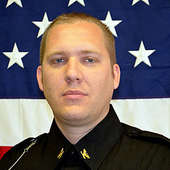Opinion
The genetic fingerprint and what it can do for law enforcement
Saturday, July 8, 2017
Of all the different investigating techniques and technology available to law enforcement, I have always found DNA analysis to be the most interesting. There are more than 7 billion people in the world today, and each one has a unique strand of DNA that makes them who they are.
Not long ago we were notified that a DNA match was found from evidence that investigators had collected at a burglary out in the county. When we get a match like this, our next step is to collect a sample from the suspect of the possible match so the lab can confirm it is indeed the DNA of that person.
The ability to collect and analyze DNA has come a long way over the years, and for the law enforcement world it has helped dramatically when it comes to identifying evidence relating to victims and suspects. The process for getting DNA results from the lab can take a very long time, but the results can make all the difference when it comes to those cases where there is no other evidence to go on.
A few years ago, a burglary that had no suspects and no other evidence indicating who may have committed the crime, took a turn for the better when we were notified that a DNA sample we collected from a dresser had been identified with a positive match. If the detective had not swabbed for DNA evidence, the crime may have gone unsolved.
Although most people do not have their DNA on file for the crime lab to compare samples to, there is a national database that contains genetic profiles of known felons so they can be compared to evidence submitted by law enforcement for possible matches. Because of the time it takes to process DNA samples in the lab, few crimes are solved compared to the amount of crimes that are committed each day, but when DNA can be used, it is often used on those cases that have no other leads.
In 1974, a 17-year-old girl by the name of Mary J. Jones was raped, beaten, and shot to death in Blakesburg, Iowa. Although there was a suspect, there was little evidence to make a strong case and the crime would remain unsolved for years to come.
It would not be until 2010, when the use of DNA comparison taken from the bed sheets still in evidence found a match in the system to the original suspect in the case. In 2014, Robert Pilcher pled guilty to the murder and was sentenced to prison for his crime.
There are countless stories of unsolved crimes that were solved because of DNA evidence; and even though we cannot put DNA in a small machine in the back of our office and push a button that give sus instant results like the detectives on TV are able to do, the speed in which it can be processed will only grow faster each year as technology is improved.
This spring we had another member of the Sheriff’s Office graduate from the MSSU Crime Scene Investigation School and we will be sending additional deputies to the school later this year. Having the ability to send not only investigators, but also patrol deputies to this school will help increase their knowledge and understanding when it comes to processing crimes scenes. I am pleased to have deputies with the desire to increase their skills in their profession and in return help better serve the citizens of Vernon County.

